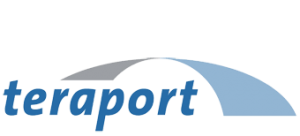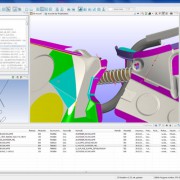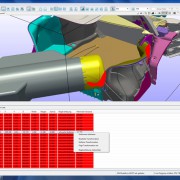Teraport DMU-Toolkit 4.5: Extended and optimized functions of mounting simulation tools
The current DMU-Toolkit release 4.5. contains multiple improvements and advancements. These allow an even more efficient and flexible use of Teraport’s software-toolbox. Our software developers provided a foundation for further innovation, which should affirm Teraport’s leading market position. A special focus lay on the functional extension and improvement of the tools for mounting and demounting simulation (DMU.Planner and DMU.Motion). Mr. Raphael Heilig, managing director of Teraport GmbH says: „Release 4.5 is a further milestone regarding sustainability. We thereby offer highest quality software solutions in the field of DMU (Digital-Mockup), with a maximum of flexibility and functionality.”
Performance:
Release 4.5 offers the tools for mounting/demounting simulation and fluid analyzing as 64-bit enabled versions. This lets users, given the accordant operating system, process triangulated 3D-models of 50-million polygons or more. In the same manner the needed calculation times have been significantly reduced.
Functionality and Flexibility
The automatic path planning of a collision free demounting path with DMU.Planner works now with predefined conditions for every single one of the environment models. The user is able to set allowed distance and collision values. A part, which needs to be demounted past a sealing being represented by a rigid CAD-model, can be simulated respecting a user defined maximum collision value towards that special, in reality soft and flexible, part.
Furthermore passages of a demounting path can be marked as areas, where collisions are tolerated. DMU.Planner simulates a collision free mounting path towards and after the marked passage and adds the knowingly colliding part of the path to the calculated result.
Intelligent algorithms offer the user different new options to deal with tight and locked mounting positions of parts as well.
As well as DMU.Planner, DMU.Motion the tool for dynamic collision detction offers some new options. Besides optimized visualization of collisions and distance violations it is now possible to define a lower and higher bound for the dynamic distance analysis. Violations of the lower bound are seen as hard violations and marked in one color e.g. yellow, violations between the lower and higher bound are seen as soft violations and marked in another color e.g. green.






